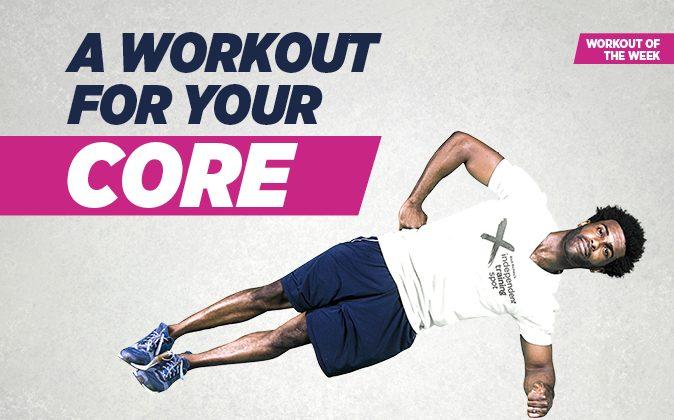When you are looking for an efficient and effective way to work out, go to calisthenics.
Calisthenics don’t require any equipment, so you learn to control your body in space. The purpose of these movements is to increase flexibility (your range of motion), mobility (how well you move through your range of motion), as well as posture, strength, and conditioning.
The following workout can be done anywhere, even with limited space. So it’s a good one to get you working out for the first time if you are intimidated by the gym atmosphere, or help you continue to work out while you are traveling and don’t have access to a fitness facility.

Iron Cross
Begin by lying supine (on your back) with your arms out to your sides in line with your shoulders. Your legs should be straight and together.
Lift one leg, keeping it as straight as possible, and dorsiflex the foot (point the toes back toward you). Lift the leg as high as you can while keeping it straight.
Then lower the leg across your body toward the opposite hand.
Lower the leg as far as you comfortably can while maintaining it straight and keeping both shoulders on the floor. The goal is to touch the foot to your opposite hand while the hand remains on the floor.
Hold the bottom position for about two seconds before you return to the starting position in the same manner that you went down. Repeat on the opposite side.
Do two rounds of five on each side.
Scorpion
Begin by lying prone (on your stomach) in the same setup as the Iron Cross.
Lift one leg as high as you comfortably can with a slight bend in your knee so that leg looks like a scorpion’s tail. The toes will be plantar-flexed (toes pointed away from you).
Lower the lifted leg, crossing it to the opposite hand.
Lower it as far as you comfortably can, and it is okay if the shoulders rise slightly off the floor this time. The goal is to touch the hand while it remains on the floor,
Hold the bottom position for two seconds before you repeat on the other side.
Do two rounds of five on each side.
Table-Top Bridge
This exercise activates the glutes and muscles of the scapula to improve your posture and make these muscles more efficient for the following exercises.
Begin seated on the floor with your feet flat and positioned as though on the corners of an equilateral triangle.
Place your hands flat on the floor about a foot behind you. There will be three different hand positions during this movement: forward, lateral, and back. With each hand position, your arms should be completely straight at the starting position, and your fingers spread as wide as you comfortably can.
Drive your hips up as high as you comfortably can by pressing through your heels and come to a tabletop position, keeping your arms as straight as possible on the way up.
Hold for three seconds at the top, and return to the starting position, again keeping your arms as straight as possible while you move.
Do five repetitions of each hand position, and two rounds each. If your wrists bother you when your hands are flat, you may put them in a fist to take pressure off of the wrist.
Wall Extensions
Stand as close as you can to a wall with your back flat against it. You might have to move your feet out slightly if you are having trouble keeping your back flat. You may also need to tilt your pelvis back (posterior tilt) to get to neutral spine.
Bring your elbows to shoulder height against the wall.
Then bring your hands against the wall as well.
Keep your shoulder blades retracted and depressed (pinched together and down) throughout the whole exercise.
While keeping your hands and elbows against the wall, and shoulder blades retracted and depressed, lift your hands as high as you can (full extension).
Do two rounds of 10 reps.
Air Squats
Begin standing with your feet hip-width apart. If you have trouble squatting, then place them shoulder-width apart.
Sit back on your heels as deep as you comfortably can by hinging at the hips.
As you sit deeper, you need to draw the navel in toward the spine to maintain proper alignment and protect yourself from injury.
Your goal is to get to at least chair-height if you have the proper flexibility and mobility in your foot-ankle complex and hips. If you have the proper core strength, you can squat as deep as you can toward the floor
Do a squat ladder of 10–1 with up to 60 seconds of rest after each round is done. This means you do 10 squats and rest for a minute at most. Then do 9 squats and rest for a minute at most until you get to zero.
Chad Raynor is an NASM-certified personal trainer, corrective exercise specialist, and performance-enhancement specialist. He is also an SFG Level 1 Kettlebell instructor and rep for Independent Training Spot, a sports performance and sports medicine facility in Midtown Manhattan. [email protected]

